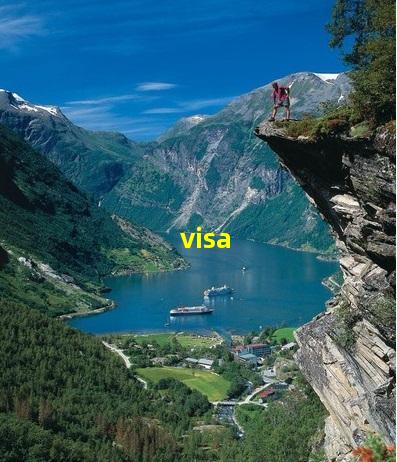多次入境签证英文简称(中国签证类型8种缩写全称)
1、多次入境签证英文简称
1. Introduction
As a travel enthusiast, I have had the opportunity to explore numerous countries and experience different cultures. One aspect of travel that often comes into play is the need for a multiple entry visa, which allows travelers to enter a country multiple times within a specified period. In this article, I will focus on the English abbreviation for multiple entry visas.
2. What is a multiple entry visa?
A multiple entry visa is a type of visa that permits the holder to enter a country multiple times during the validity period. It is particularly useful for travelers who need to visit a country for various reasons, such as business meetings, tourism, or visiting friends and family.
3. English Abbreviation for Multiple Entry Visa
When it comes to the abbreviation for multiple entry visas, the most commonly used term is "MEV." MEV stands for "Multiple Entry Visa" and is widely recognized and accepted in the travel and tourism industry.
4. Importance of MEV
Obtaining a MEV can be beneficial for frequent travelers to a particular country. It saves time, effort, and money, as they don't have to go through the visa application process every time they want to visit the country. It allows flexibility and convenience, making it easier for travelers to plan their trips.
5. Application Process
The application process for a MEV varies from country to country. Generally, applicants are required to submit the necessary documents, such as a valid passport, proof of travel purpose, and payment of visa fees. It is advisable to check the specific requirements and procedures of the country you intend to visit.

6. Validity and Duration
The validity and duration of a MEV also vary depending on the country and its immigration policies. Some multiple entry visas may be valid for a few months, while others can be valid for several years. The duration of each stay during a single visit is typically determined by the immigration officer at the point of entry.
7. Conclusion
In conclusion, the English abbreviation for multiple entry visas is MEV. Having a MEV can greatly benefit frequent travelers, as it allows them to enter a country multiple times without having to go through the visa application process each time. It is essential to understand the specific requirements and procedures of the country you plan to visit to ensure a smooth visa application process. Remember, always follow the immigration laws and regulations of the countries you visit to have a hassle-free travel experience.
2、中国签证类型8种缩写全称
中国签证是前往中国旅游、工作或学习的必备文件。根据不同的目的和情况,中国签证可以分为多种类型。下面是中国签证8种类型的缩写全称及其对应的含义。
1. L签证
L签证是旅游签证(Tourist Visa)的缩写,适用于前往中国进行短期旅游的人员。持有L签证的人可以在中国境内旅游、探亲、访友,并参加一些非商务活动。

2. F签证
F签证是访问签证(Visiting Visa)的缩写,适用于前往中国进行短期访问的人员。持有F签证的人可以在中国境内进行学术交流、文化交流、科学技术交流等非商务活动。
3. X签证
X签证是学习签证(Study Visa)的缩写,适用于前往中国进行学习的人员。持有X签证的人可以在中国境内就读高校、中学或进行职业技术培训。
4. Z签证
Z签证是工作签证(Work Visa)的缩写,适用于前往中国从事工作的人员。持有Z签证的人可以在中国境内工作,并且必须提供招聘单位的工作许可证明。

5. C签证
C签证是船员签证(Crew Visa)的缩写,适用于前往中国从事国际航行船员职务的人员。持有C签证的人可以在中国境内进行航运业务。
6. G签证
G签证是过境签证(Transit Visa)的缩写,适用于前往中国境外第三国途中在中国境内中转的人员。持有G签证的人可以在中国境内停留一定时间,但不得进入中国境内其他区域。

7. D签证
D签证是永久居住签证(Residence Visa)的缩写,适用于前往中国并长期居住的人员。持有D签证的人可以在中国境内居住、工作并享受相应的社会保障和福利待遇。
8. A签证
A签证是外国人学历认证签证(Foreign Academic Degree Verification Visa)的缩写,适用于前往中国进行学历认证的人员。持有A签证的人可以在中国境内进行学历认证相关的工作。
这些不同类型的中国签证适用于不同的情况和目的。申请签证时,申请人需要根据自己的具体情况和计划选择适合自己的签证类型,并按照相关规定进行申请和办理手续。
注:本文只提供签证类型的缩写全称,具体办理细节和要求请咨询相关中国使领馆或机构。
3、出入境表格中英文对照表
出入境表格中英文对照表
1. 姓名-Name
在出入境表格中,姓名一栏需要填写旅行者的全名。中文填写时,姓和名之间不需要加空格。英文填写时,姓和名之间需要加一个空格。
2. 国籍-Nationality
国籍一栏需要填写旅行者的国籍。中文填写时,可以写中文名称或者国家的拼音。英文填写时,需要写国家的英文名称。
3. 出生日期-Date of Birth
出生日期一栏需要填写旅行者的出生日期。日期的格式可以根据不同国家的习惯来填写。通常使用年-月-日的格式。
4. 性别-Sex
性别一栏需要填写旅行者的性别。通常填写男性(Male)或女性(Female)。
5. 护照号码-Passport Number
护照号码一栏需要填写旅行者的护照号码。确保填写准确无误,以免影响出入境手续。
6. 签发日期-Date of Issue
签发日期一栏需要填写护照的签发日期。日期的格式可以根据不同国家的习惯来填写。通常使用年-月-日的格式。
7. 有效期至-Date of Expiry
有效期至一栏需要填写护照的有效期截止日期。日期的格式可以根据不同国家的习惯来填写。通常使用年-月-日的格式。
8. 出入境口岸-Port of Entry/Exit
出入境口岸一栏需要填写旅行者计划进入或离开的国家或地区的口岸。需要填写具体的城市或机场名称。
9. 参观目的-Purpose of Visit
参观目的一栏需要填写旅行者来访的目的。可以选择旅游、商务、探亲等选项,也可以填写其他具体的目的。
10. 在华停留期限-Duration of Stay in China
在华停留期限一栏需要填写旅行者计划在中国停留的时间,通常以天为单位。
如图所示,这是一张出入境表格的示意图:

以上是出入境表格中英文对照表的介绍。填写出入境表格是出国旅行时的一项重要步骤,正确填写可以减少不必要的麻烦和延误。希望以上信息对您有所帮助,祝您旅途愉快!
4、出入境记录有英文的吗
1. Introduction
As a seasoned traveler, one of the questions that frequently comes to mind is whether entry and exit records at immigration checkpoints contain information in English. In this article, we explore this topic to provide a clearer understanding for fellow travel enthusiasts.

2. Immigration Checkpoints
At immigration checkpoints, passports are scrutinized to verify the traveler's identity and ensure compliance with entry requirements. These checkpoints are usually equipped with computer systems that store information about entry and exit records.
3. English Language Usage
In many countries, including popular tourist destinations, immigration checkpoints use the English language as a standard for recording entry and exit information. This ensures that the records are internationally understandable and compatible with other countries' systems.
4. Entry and Exit Stamps
When entering or departing a country, travelers' passports are typically stamped to indicate the dates of entry and exit. These stamps often include information such as the name of the country, the checkpoint location, and the date of entry or exit. This information is commonly provided in both the local language and English.
5. Electronic Systems
With the advancement of technology, many countries have adopted electronic systems for immigration control. These systems may include biometric data collection, such as fingerprints or facial recognition, and digital records of entry and exit. The use of English in these systems ensures consistency and compatibility with other countries' electronic databases.
6. Benefits of English Language Records
Having entry and exit records in English offers several advantages to travelers. Firstly, it simplifies the process of reviewing past trips for reference or visa applications, especially when dealing with non-English speaking authorities. Additionally, it facilitates communication in case of any discrepancies or disputes regarding entry or exit dates.
7. Conclusion
In conclusion, most countries' entry and exit records at immigration checkpoints contain information in English. This standardization allows for ease of understanding, compatibility with international systems, and benefits for travelers. So, next time you travel, rest assured that information in your passport will likely be in a language you can understand! Happy travels!

.jpg)
.jpg)
.jpg)
.jpg)
.jpg)
.jpg)